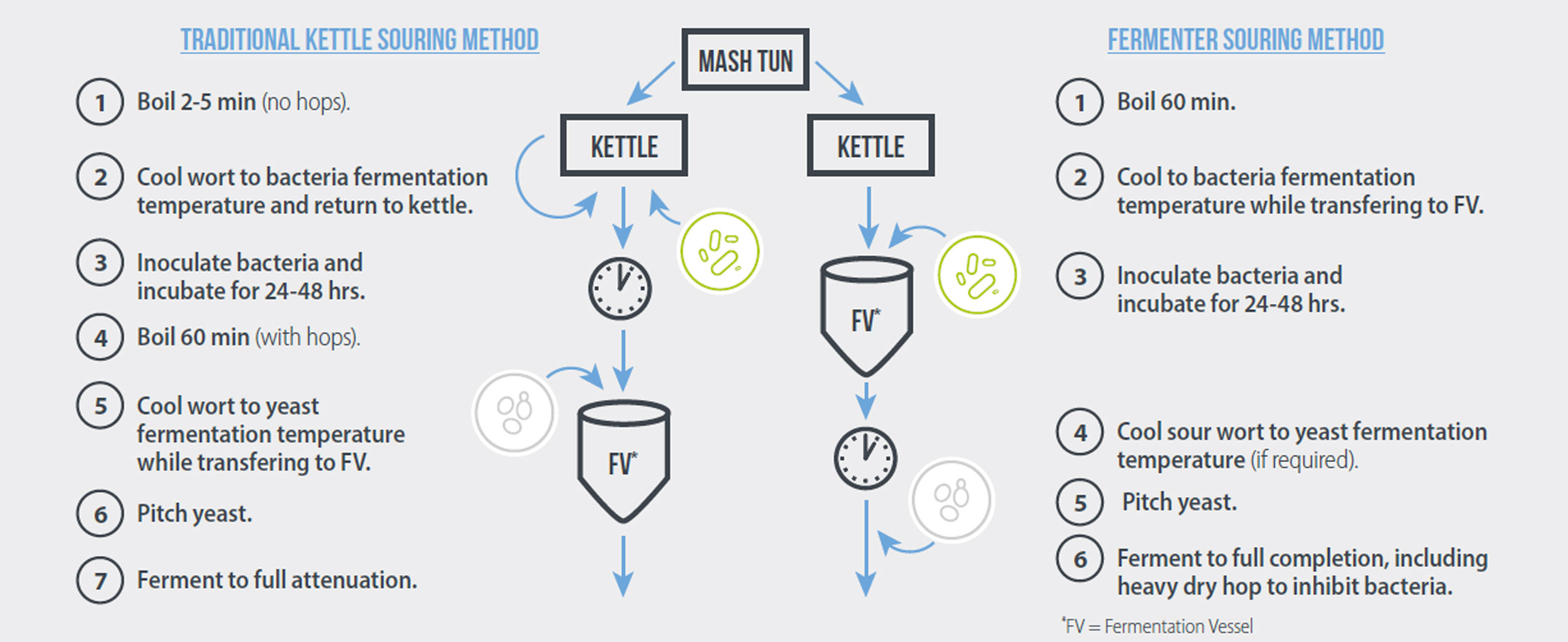Blog | Reading Time 2 minutes
Souring with Bacteria: The Choice is Yours
Brewers have several options when it comes to using bacteria to make sour beer. While Kettle Souring is the preferred method, brewers can also use their fermenter to perform a sequential inoculation with bacteria and yeast to achieve a sour beer.
This technique is generally called Bacteria Fermenter Souring and, as the name implies, the souring process is done in the fermenter.

Bacteria Fermenter Souring Method:
1. Wort is brewed as normal, and upon knockout into the fermenter, bacteria is added.
a. Brewers need to pay attention to the type of bacteria (usually a species of lactobacillus) and make sure their wort is at the correct temperature for their chosen bacteria.
b. It usually takes around 24-48 hours for the lactobacillus bacteria to produce the desired level of acidity.
2. Once this level of acidity is achieved, the brewer then adds their selected yeast strain to proceed with ethanol fermentation.
a. It is important that the brewer adjusts the temperature of their fermenter to the correct temperature for their chosen yeast strain.
b. It is still recommended that brewers add their selected bacteria first in the fermenter before adding their yeast, so that these two organisms do not simultaneously compete for nutrients.
3. Dry Hop to inhibit bacteria.
It is important to note that brewers using the Bacteria Fermenter Souring technique do not benefit from the heat kill step employed in the Kettle Souring process. Instead, brewers rely on a healthy dry hop as well as fermentation ranges outside the bacteria’s optimal temperature range to deactivate the bacteria.
There are many benefits to the Bacteria Fermenter Souring technique. Notably, flavor benefits, such as a “soft, balanced acidity…with prominent tropical fruits and citrus aroma” are evident with this process (Vocation Brewing, UK).

Published Apr 14, 2021 | Updated Jul 12, 2023
Related articles
Need specific information?
Talk to an expert